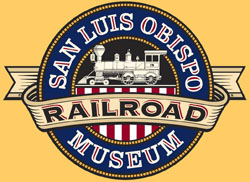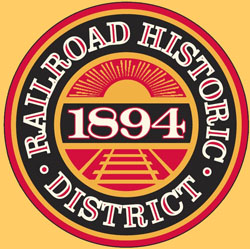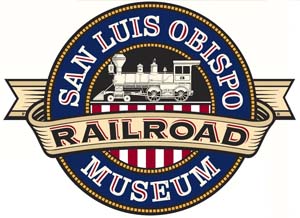Santa Maria Valley Railroad Fact Sheet
Return to QR Index
Equipment History - Santa Maria Valley Railroad
Diesel Locomotives:
No. 10 GE 70-ton 600 hp built/acquired 1948, scrapped 1994
No. 20 GE 70-ton 600 hp built/acquired 1949, sold 1994
No. 30 GE 70-ton 600 hp built/acquired 1950, sold 1994
No. 40 GE 70-ton 600 hp built/acquired 1952, sold 1994
No. 50 GE 70-ton 600 hp built/acquired 1952, sold 1994
No. 60 GE U6B 640 hp built/acquired 1959, scrapped 1991
No. 70* GE 70 ton built January 1950, acquired 1972
No. 80* GE 70 ton built December 1953, acquired 1972
No. 1801* EMD GP9 1750 hp built June 1959, acquired 1992
No. 1322* EMD GP-7U (ex-Santa Fe) leased 2017
*=currently operating
Steam Locomotives
No. 1 Schenectady 4-6-0 acquired 1911, scrapped 1913
No. 1/15 Baldwin 2-8-0 acquired 1912, renumbered 1926, scrapped 1933
No. 2/12 Baldwin 2-6-0 acquired 1912, renumbered 1926, scrapped 1937
No. 21 Baldwin Mikado 2-8-2 built/acquired 1925, retired 1962, sold 1966
No. 100 Baldwin 2-8-2 built 1926, acquired 1942 from McCormick Lumber Washington, sold 1962
No. 125 Baldwin 2-6-2 built 1925, acquired 1941, scrapped 1947
No. 150 Baldwin 2-8-2 built 1922, acquired 1942
No. 205 Baldwin 2-6-2 built 1923, acquired 1933 from San Joaquin & Eastern
(Undergoing restoration by George Lavacot in Oregon, 2015 photos)
No. 1000 Schenectady ALCO 2-8-2 built 1920 for Hetch-Hetchy RR, acquired 1944
(Now at LA Griffith Park Travel Town)
Cabooses:
No. 170 acquired 1926 (from UPRR), retired 1962 (restored - now at Oceano Depot)
No. 171 acquired pre-World War II, retired 1961
No. 172 acquired 1945, retired mid-1950s
No. 180 acquired mid-1950s, retired 1962 (restored - now at Santa Maria Transit Center)
No. 190 acquired mid-1950s, retired 1962
No. 200 built 1959, in-service 1962, retired 1991
No. 210 built 1959, in-service 1962, retired 1991 (restored - now at Guadalupe Amtrak Station)
History Timeline - Santa Maria Valley Railroad
1895 (March) - Southern Pacific (SP) reached Guadalupe
1897 - Union Sugar mill is completed at Betteravia
1899 (August) - SP completed branch from Guadalupe to Betteravia
1911 (July 11) - SMVRR commenced construction by an English oil syndicate to haul oil and asphalt from Roadamite to Guadalupe.
1911 (August 23) - grading commenced
1911 (September 28) - laying rails commenced
1911 (October 7) - first train operated
1911 (October 7) - SMVRR reached Santa Maria (building from the Betteravia branch).
1911 (November 5) - Track completed to Roadamite.
1912 (March 15) - original construction completed
1913 - two additional locomotives are purchased and the original locomotive is scrapped
1925 - SMVRR took over switching operations for Union Sugar Plant which was initially successful but in the 1920s the sugar plant closed and the railroad drifted into bankruptcy in 1925.
1925 - Captain G. Allan Hancock purchased SMVRR in a bankruptcy auction on the steps of the Santa Barbara County Courthouse for $75,000.
1925 (June 5) - Hancock received Locomotive No. 21 from Baldwin Locomotive Works.
1925 - All 50 pound rail (mostly on sidings) replaced with 75 pound rail and bridges rebuilt. Most of the mainline was originally laid with 75 pound rail. Hancock invested heavily in the railroad, installing new ties and new rail, and buying locomotives.
1920s - Hancock built a state of the art, fully-equipped engine house to maintain his locomotives and equipment.
1926 - Union Sugar Mill closed.
1930s - SMVRR was hauling many carloads of sugar beets to the Union Sugar Plant in Betteravia, and crude oil and vegetables out of the valley. Captain Hancock developed agriculture in the Santa Maria Valley, introducing new irrigation methods, and invested heavily in packing sheds, an ice plant, and Rosemary Farms. SMVRR was one of the busiest shortline railroads on the west, hauling over 20,000 carloads per year.
1934 - Union Sugar Mill reopened.
1936 - Betteravia Branch 75 pound rail was upgraded to 80 pound rail.
1941 - 1942 - three additional locomotives were acquired.
1940s (early) - At the start of World War II, the SMVRR purchased the old Pacific Coast (narrow gauge) Railroad right-of-way to the Airbase, now the location of the Santa Maria Airport. The Airbase Branch is actually the oldest railroad right-of-way on the SMVRR system, originally constructed in April 1882.
1940s (late) - Roadamite ceased operations.
1949 - Line from Sisquoc to Roadamite was abandoned and tracks removed.
1948 (August) - Last major track construction when the Battles Branch was built to service the new Union Oil refinery. SMVRR purchased its first diesel-electric locomotives - GE 70-tonners. The GE 70-tonners (5 purchased new between 1948 and 1952) proved to be excellent work horses for SMVRR and eventually displaced the steam locomotives.
1962 (February 21) - last run of steam engine 21 with Captain Hancock at the throttle and Walt Disney in the cab. This was the end of steam at SMVRR. The SMVRR was one of the last railroads on the West Coast to run main line steam locomotives.
1964 - SMVRR began upgrade of track on the Betteravia Branch from 80 to 90 pound rail to handle heavier tank cars.
1965 (May 31) - Captain Hancock passed away. Two Hancock family trusts take over the SMVRR - Marian Mullen Trust and Rosemary Trust.
1970 - Track upgrade to 90 pound rail completed from Guadalupe to Carr
1972 - Last 2 diesel locomotives (#70 and #80) purchased giving the railroad four sets of 2 unit engines.
1970s (late) - fresh vegetable market was gone. SMVRR traffic declined due to trucking.
1986 - Holly Sugar purchased Union Sugar, taking over operation at Betteravia.
1992 (December) - SMVRR purchased the GP9 diesel locomotive No. 1801.
1993 (August) - Holly Sugar closed down the sugar refinery in Betteravia (opened originally in 1899). This resulted in the loss of 90% of the railroad's remaining traffic.
1995 (end) - four of the six 70 tonner diesel locomotives were sold off due to the declining revenue.
1999 - Rosemary Trust took complete control of the railroad and worked to turn the fortunes around for the railroad. An intense marketing campaign brought some new customers aboard.
2002 - Railroad divested its right-of-way east of Highway 101 in Santa Maria and the main line trackage was reduced to 14 miles.
2006 (October) - SMVRR purchased by Coast Belle Rail Corporation (ending more than 80 years of control by Hancock Family). New ownership embarked on a task of rebuilding the track and rebuilding the customer base.
2006 (November 9) - SMVRR chartered the private car Silver Lariat for a freight customer appreciation excursion - the first public excursion since 1962.
2006 (December 9)- SMVRR held its first ever public open house to reintroduce the public to the railroad.
2007 - Trackage is removed from Miller Street Yard.
2008 (April 5-6) - former SMVRR Railbus No. 9 made a cameo appearance during a Motorcar Operators West excursion.
2008 (September) - SMVRR moved its yard and office facilities out of downtown Santa Maria and relocated to the former sugar plant in Betteravia. This new location offers full transload services with team track, dock track and ramp track as well as acres of on-ground storage.
2013-2015 - Busiest years since the sugar beet plant closed in 1993. New customers come on board as well as current customers increased their carloadings.
2016 - SMVRR relocated yard and offices to Osburn Yard in Santa Maria.
Return to QR Index



